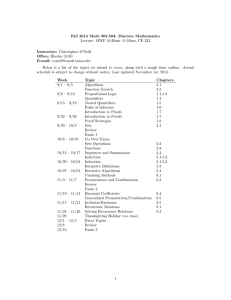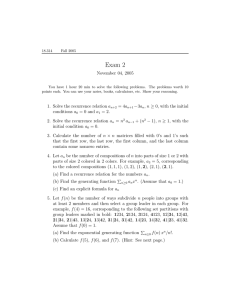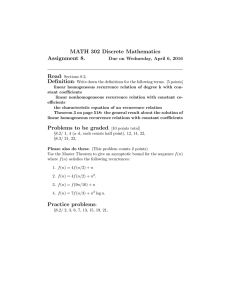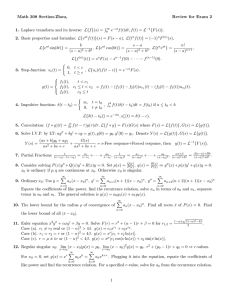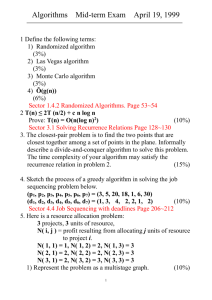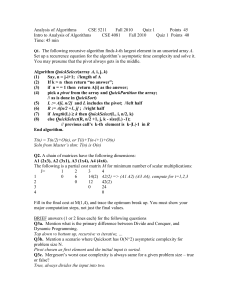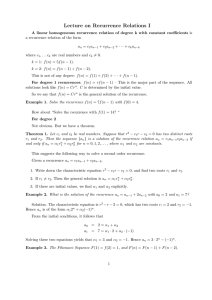Time Complexity Analysis: Algorithms & Recurrence Relations
advertisement
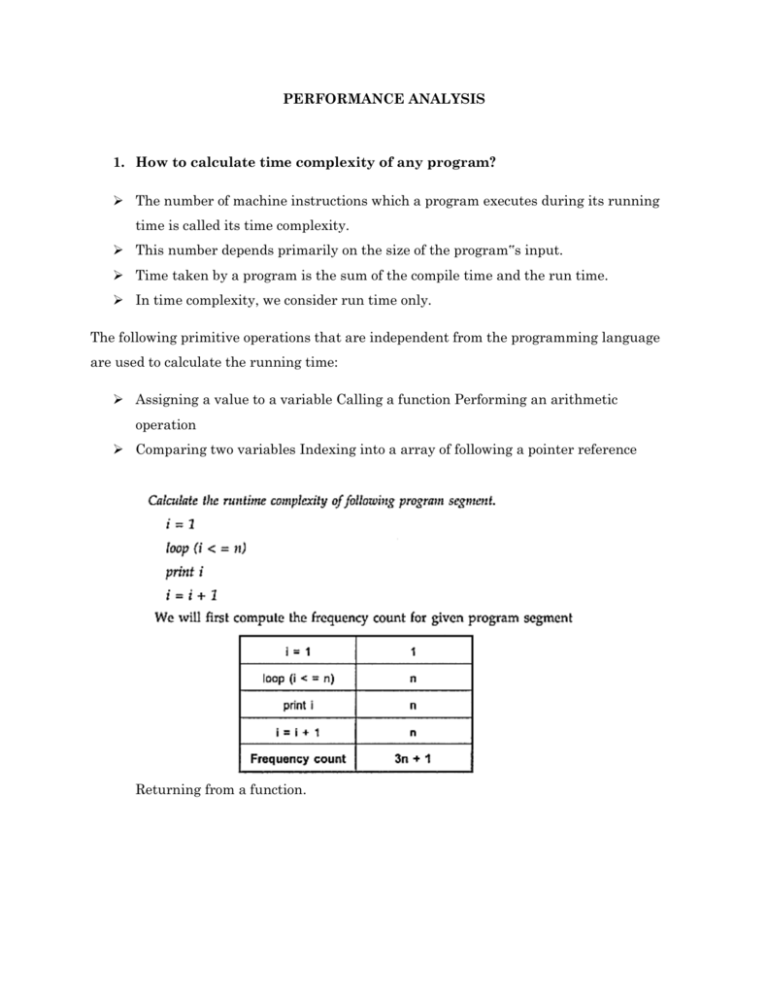
PERFORMANCE ANALYSIS 1. How to calculate time complexity of any program? The number of machine instructions which a program executes during its running time is called its time complexity. This number depends primarily on the size of the program‟s input. Time taken by a program is the sum of the compile time and the run time. In time complexity, we consider run time only. The following primitive operations that are independent from the programming language are used to calculate the running time: Assigning a value to a variable Calling a function Performing an arithmetic operation Comparing two variables Indexing into a array of following a pointer reference Returning from a function. RECURRENCE There are two important ways to categorize (or major) the effectiveness and efficiency of algorithm: Time complexity and space complexity. The time complexity measures the amount of time used by the algorithm. The space complexity measures the amount of space used. We are generally interested to find the best case, average case and worst case complexities of a given algorithm. When a problem becomes “large”, we are interested to find asymptotic complexity and O (Big-Oh) notation is used to quantify this. Recurrence relations often arise in calculating the time and space complexity of algorithms. Any problem can be solved either by writing recursive algorithm or by writing non-recursive algorithm. A recursive algorithm is one which makes a recursive call to itself with smaller inputs. We often use a recurrence relation to describe the running time of a recursive algorithm. A recurrence relation is an equation or inequality that describes a function in terms of its value on smaller inputs or as a function of preceding (or lower) terms. Space Complexity: The Space Complexity of an algorithm is the amount of memory it needs to run to completion. METHODS FOR SOLVING RECURRENCE RELTIONS We will introduce three methods of solving the recurrence equation: 1. The Substitution Method (Guess the solution & verify by Induction) 2. Iteration Method (unrolling and summing) 3. The Recursion-tree method 4. Master method In substitution method, we guess a bound and then use mathematical induction to prove our guess correct. The iteration method converts the recurrence into a summation and then relies on techniques for bounding summations to solve the recurrence and the Master method provides bounds for the recurrence of the form. ONE MARK QUESTIONS 1. “Analysis of algorithm” is a field in computer science whose overall goal is an understanding of the complexity of algorithms (in terms of time Complexity), also known as execution time & storage (or space) requirement taken by that algorithm. 2. . An Algorithm is a well defined computational procedure that takes input and produces output.

